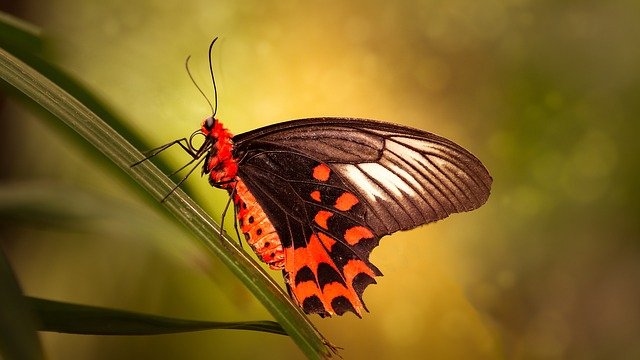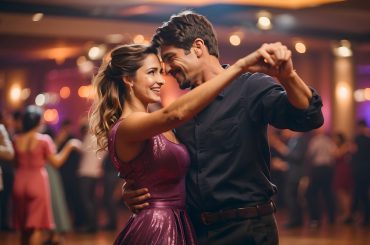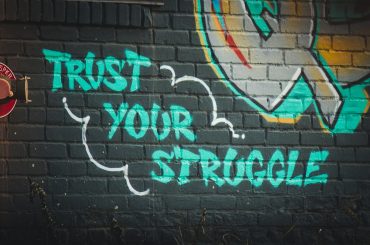The reason I talk about recovery and resilience is simple. I’ve lived too many years stuck in the muck of trauma symptoms and undiagnosed post-traumatic stress. I know what freedom can come from gained knowledge about trauma and the practice of resilience.
Yes, resilience is a practice. It is not something that builds on its own or appears like orb weaver webs on our deck in late summer.
The experience of trauma.
For those who live in the wooded mountains, you know what I’m talking about. At night in the early fall, these incredible little beasts work and toil and spin and dangle from their creations, catching the bugs that annoy us like mosquitos and the like. When I go outside to let out the dog first thing in the morning– poof! The magnificent spider is gone and what is left is the remnant of its masterpiece stretching from one side of our deck to another.
Hopefully, none of you have spider phobias, or perhaps some exposure therapy will be helpful for you here, but this is an interesting picture for what the experience of trauma is like.
We all have our spiders, right? Whether you’ve lived through something traumatic as a child (abuse, neglect, divorce, death) or a natural disaster (2020 and counting y’all), there is something that lurks or has lurked—building, spinning, weaving things like behaviors and false beliefs and unhealthy coping mechanisms in our lives. Even though the actual spider is gone, the web still remains, dangling in wait—and you are left waiting for it to come back at night. You just know (or your body thinks it knows) it is going to come back.
Does this metaphor feel familiar to you?
It feels very familiar to me.
I got sober when I was seventeen (this was before the millennia oh my – anyone remember Y2K?!) but it didn’t stick.
Of course, my family didn’t know why I’d choose to continue using and disappointing them and I didn’t know either. I had wanted recovery. I knew I wasn’t living according to my values.
So, what came up?
What came up for me as I started my journey into recovery?
Well, for me, an untreated eating disorder started forming and years and years of cross addictions to things like nicotine, alcohol and cannabis. And men.
I treated my body, not like a temple, but like a garbage dump—or better, dumpster fire.
If I couldn’t use something to numb the feelings of anxiety, depression, obsessive-compulsion, fear—I didn’t know how to live.
For years – almost twenty—I struggled on and off but mostly on.
It wasn’t until I turned thirty that I started to learn about trauma.
Of course, I knew I had experienced trauma – more adverse childhood experiences than I could count and two sexual assaults or rapes – but I didn’t know how much these experiences were impacting my day-to-day life, my coping skills, my support system, my relationships and my physical, emotional and spiritual health.
I learned about post-traumatic stress disorder and was finally diagnosed. I went through the phenomenal evidence-based treatment called Seeking Safety (thanks Megan!). I connected with a group of young people in recovery who were learning the same things about themselves and we could process what we were learning in safety and with lots of caffeine and sober events (thanks Shelly!).
It didn’t happen overnight and along the way, I still carried shame with me like the fear that was also slow to dissipate, but I started healing. True, deep, spiritual healing. The kind I believe Jesus talks about when he says that we are new creations.
But this doesn’t happen overnight.
Just like the orb weaver doesn’t spin its web overnight – well, maybe it does – but our trauma doesn’t always just happen and then disappear. Similarly, our healing can take time. It is a process, oftentimes a messy one.
The butterfly doesn’t just wake up one fine morning a butterfly—no it goes through a transformative process that is painful and grotesque and oozing (who really knows what goes on inside a pupa – that’s the thing the caterpillar turns into). It is horrible and ridiculous and miraculous. A slithering, slug of a thing can melt in the furnace and fire of traumatic experience. And then, out comes a beaming, glorious, vibrant yellow or purple or blazing sapphire creature and just like that you are flitting and fluttering and drinking nectar elegantly out of your own personal straw.
A bit dramatic, yes, but that is our experience of transformation.
It is beautiful.
It takes time.
It doesn’t happen overnight.
It’s not just a decision.
Transformation is a movement.
Transformation is a journey.






